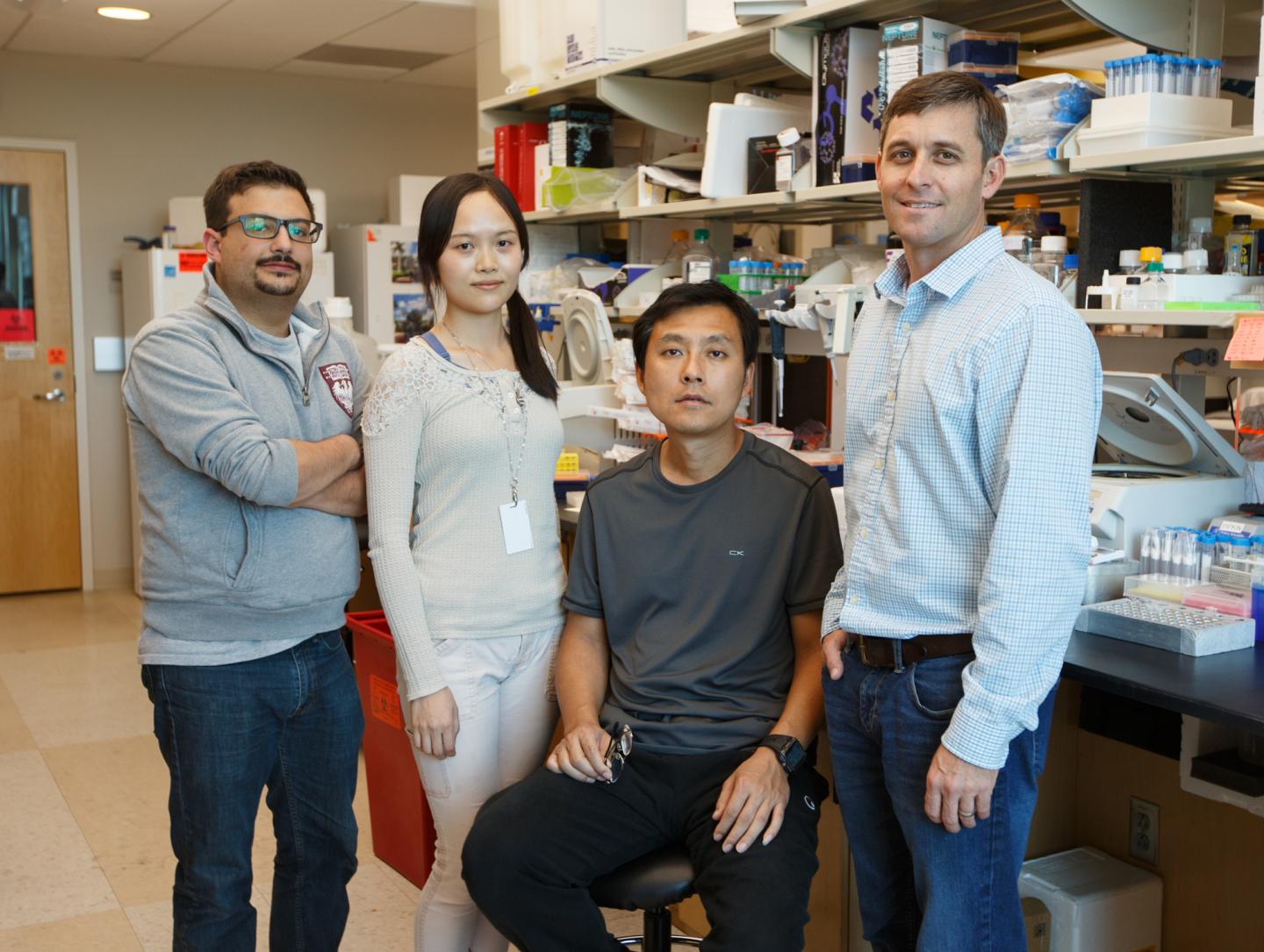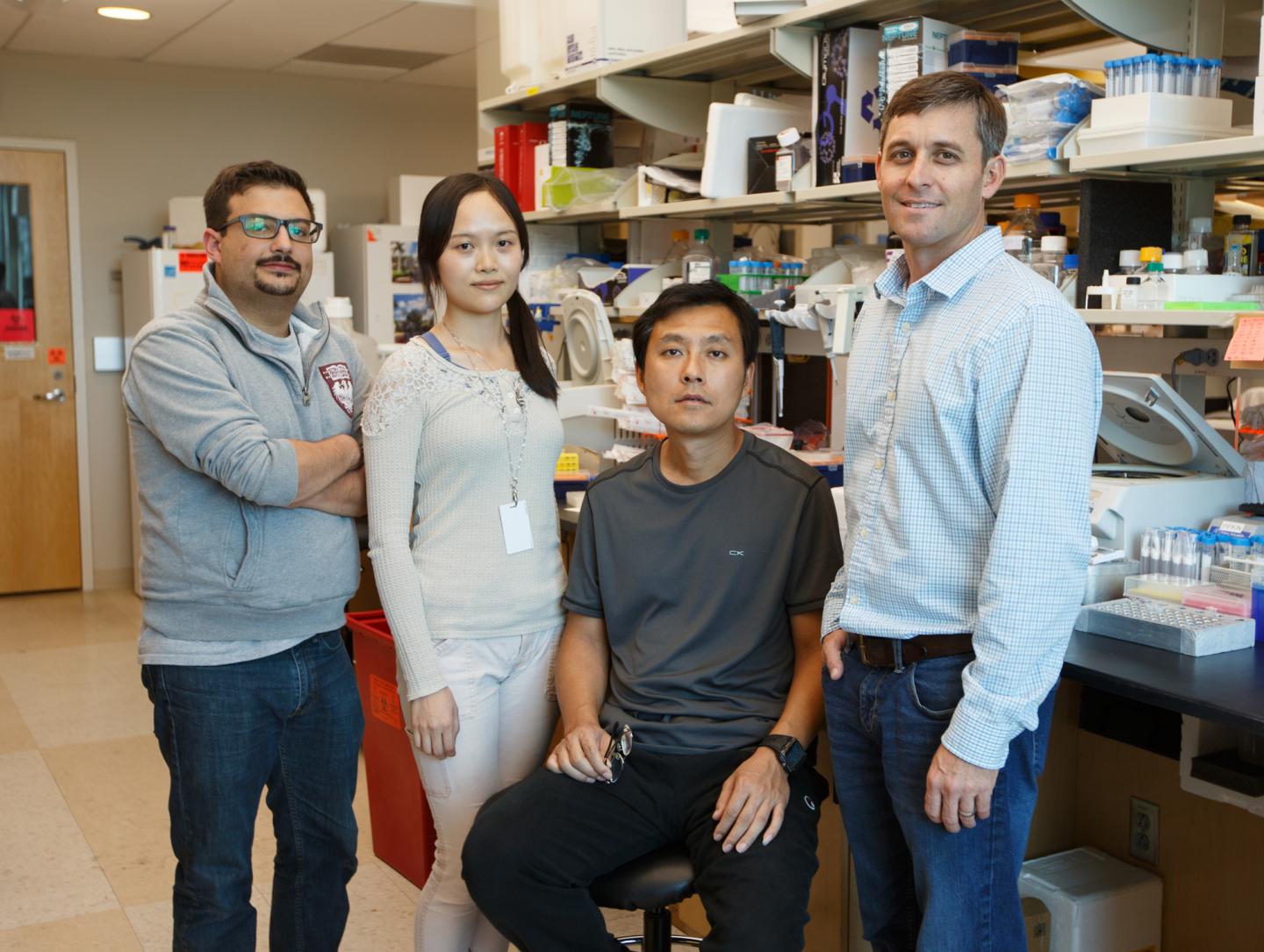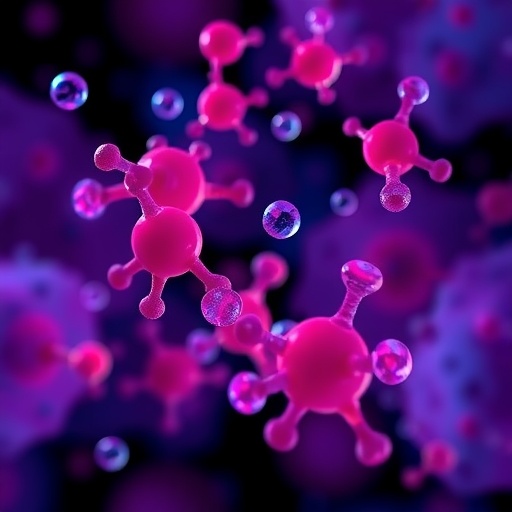
Credit: Scott Wiseman/The Scripps Research Institute
JUPITER, FL–April 17, 2018–Memory T cells are a critical element of our immune system's historical archive. To prevent repeat infections, these cells retain a record of germs they've fought before.
But for all their importance, the origins of memory T cells have remained a mystery. Now, a new study from the laboratory of immunologist Matthew Pipkin, PhD, of The Scripps Research Institute's Florida campus, lays out the opening chapter of this enigma.
Researchers found a transcription factor protein called Runx3 puts dividing T cells on track to becoming memory T cells. This new insight may allow researchers to design drugs that improve immune responses to vaccines, Pipkin says. The discovery could also have implications for chronic diseases such as cancer, in which responding T cells sometimes become "exhausted" and unable to rally an effective defense.
"There are instances such as chronic infection and tumors where the T cells differentiate in an aberrant way that shortens their life span and decreases their function," Pipkin says. "Because our study found that Runx3 is one of the earliest players during an immune response, manipulating it might be an avenue to basically turn back the clock and reprogram dysfunctional T cells into a format that is conducive to them developing into genuine memory cells that are protective.
The study, "The transcription factor Runx3 establishes chromatin accessibility of cis-regulatory landscapes that drive memory cytotoxic T lymphocyte formation," appears online in the journal Immunity on April 17, 2018.
Runx3 coordinates a rapid memory cell response
Runx3's control of T cell differentiation is important because when our bodies fight off viruses and cancers–and our T cells burst into action–the vast majority tend to become effector cells. These effector cells are short-lived and do not persist once the infection resolves.
The amount of Runx3 has a deterministic effect on the outcome of the differentiation of the T cells, Pipkin says. Runx3 controls that burst of activity and ensures the cells are directed toward a different fate, that of memory T cells, which can live for decades.
"This finding provides molecular evidence that the programming of memory is established very rapidly, and that it's kind of a push and pull to restrain the developing memory cells from differentiating into effector cells, which is a dead-end road," says Pipkin.
The team studied what happened when Runx3 expression was partially suppressed using RNA interference. "All those experiments showed you lost the known precursors that give rise to memory T cells," Pipkin says. Conversely, cells with experimentally increased Runx3 produced more memory T cells.
Cells with increased Runx3 were also better at regenerating new rounds of memory cells than normal cells after repeated infections with lymphocytic choriomeningitis virus (LCMV) and Listeria monocytogenes. This indicated that Runx3 enhances memory T cell potential, Pipkin says.
"Our work demonstrates that Runx3 turns down another transcription factor that commits the cells to becoming these terminal effector cells, and it slows down proliferation. That keeps the cells on a trajectory into the memory lineage."
The new study also sheds light on the timeline when immune memory is established against an invader. Researchers found molecular evidence that the programming of memory T cells happens very rapidly after the immune system first encounters new threats. At this time, naïve CD8+ T cells must begin developing into specialists called cytotoxic T lymphocytes (CTL), that can kill infected or malignant cells. Pipkin's lab found that Runx3 coordinates the memory T cell differentiation program within the first few hours of infection.
Pipkin and his colleagues discovered the critical role of Runx3 in T cell differentiation by challenging naïve T cells with an antibody signal that mimicked infection, and then mapping the areas of the newly exposed genome. This revealed that the locations on our chromosomes where Runx3 binds became receptive to binding immediately after infection, and before the first CD8+ T cell division. These regions were also receptive in fully developed memory T cells, but less so in the terminal effector cells.
The findings raise many questions, Pipkin adds. He wants to determine if some type of therapeutic could rescue naturally occurring Runx3 deficiencies. He also wants to identify the other players that cooperate with Runx3.
"We know that Runx3 is working with a number of additional transcription factors and chromatin regulatory proteins," Pipkin says. "So, we are currently trying to identify them and determine how they collaborate with Runx3 to turn on and off different regions of the genome to promote memory development."
###
In addition to Pipkin, the authors of the study include first author Dapeng Wang, Huitian Diao, Adam J. Getzler, Walter Rogal and Megan Frederick of The Scripps Research Institute; Justin Milner, Bingfei Yu and Ananda Goldrath of the Division of Biological Sciences at the University of California, San Diego; and Shane Crotty of the La Jolla Institute for Allergy and Immunology and the UC San Diego School of Medicine.
The research was supported by Frenchman's Creek Women for Cancer Research and the National Institutes of Health (grants R01 AI095634 (M.E.P.) and NIH U19 AI109976).
About The Scripps Research Institute
The Scripps Research Institute (TSRI) is one of the world's largest independent, not-for-profit organizations focusing on research in the biomedical sciences. TSRI is internationally recognized for its contributions to science and health, including its role in laying the foundation for new treatments for cancer, rheumatoid arthritis, hemophilia, and other diseases. An institution that evolved from the Scripps Metabolic Clinic founded by philanthropist Ellen Browning Scripps in 1924, the institute now employs more than 2,500 people on its campuses in La Jolla, CA, and Jupiter, FL, where its renowned scientists–including two Nobel laureates and 20 members of the National Academies of Science, Engineering or Medicine–work toward their next discoveries. The institute's graduate program, which awards PhD degrees in biology and chemistry, ranks among the top ten of its kind in the nation. In October 2016, TSRI announced a strategic affiliation with the California Institute for Biomedical Research (Calibr), representing a renewed commitment to the discovery and development of new medicines to address unmet medical needs. For more information, see http://www.scripps.edu.
Media Contact
Stacey Singer DeLoye
[email protected]
561-228-2551
@scrippsresearch
http://www.scripps.edu
Original Source
https://www.scripps.edu/news/press/2018/20180417-infection-immune-cell.html http://dx.doi.org/10.1016/j.immuni.2018.03.028





